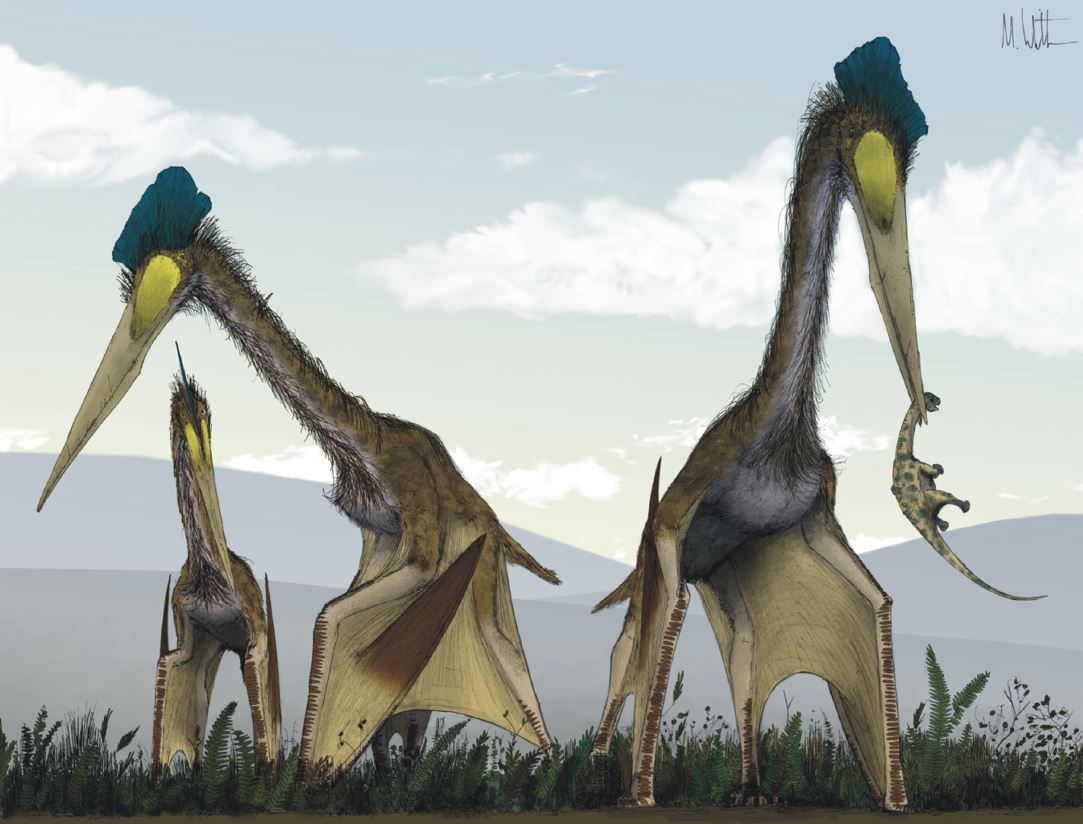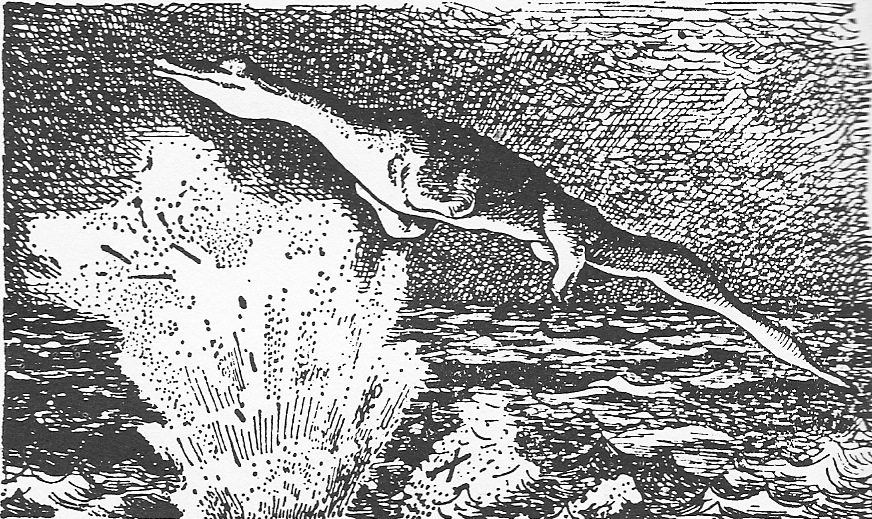
Join me in this thread as I talk about the science and decisions behind what we show in ep 2 - DESERTS - of the new @AppleTVPlus @bbcstudios series #PrehistoricPlanet . Deserts aired on Tuesday, but better late than never. Here we go... 

Deserts kicks off in western South America on an arid plain where a mass gathering of the giant #titanosaur #Dreadnoughtus have gathered to display and compete for mates. Dreadnoughtus, from Argentina, was named in 2014 by @kenlacovara [shown in photo!] and colleagues... 



The idea that sauropods might have gathered and competed is based on behaviour seen in modern birds, mammals and other animals. Remember that events like this MUST have happened in the past, as they do today...
Furthermore, our team was keen to help dispel the 'gentle giant' stereotype so commonly associated with sauropods. They were very likely aggressive, 'combat ready' and competitive, as are their living relatives (lizards, crocs and birds are all very fighty!)... 
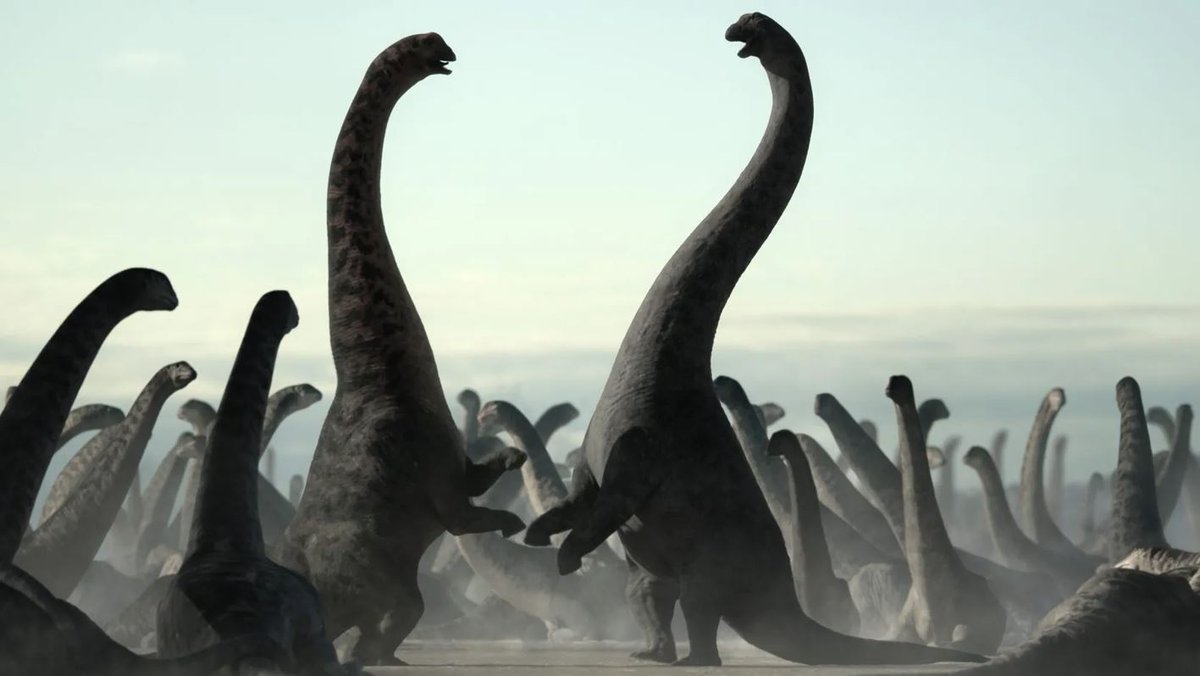
Titanosaurs were relatively agile & _extreme_ behaviour like rearing and even slow bipedal walking is backed by anatomy (wide hips, strongly muscled hindlimbs, muscular tail used as a prop etc). Their front halves were lighter than you might expect due to extensive pneumaticity..
The concept of sauropods - even giant ones - being combative and perhaps partly specialised for intraspecific fighting is known as the BRONTOSMASH! hypothesis, and it's a case that @MikeTaylor @BrianEngh_Art Mathew Wedel and I have been putting together over recent years...
You can read a ton/tonne more about BRONTOSMASH! at #SVPOW!, and check out the amazing art. This work mostly pertains to apatosaurine #sauropods, not titanosaurs, but some of it is applicable to titanosaurs too, oh yes ... svpow.com/category/bront…
We reasoned that big animals that need to gather, compete and display would do so in traditional meeting places that are big and open -- #Dreadnoughtus lived relatively close to some large S American deserts that would have been within walking distance... 

.... a reminder that we built highly detailed palaeoclimate/palaeogeographical maps for #PrehistoricPlanet , mostly not yet released...
On that note, Deserts then moves to eastern Asia where we meet iguanian lizards (many quite similar to the agamas and others of today), the tyrannosaurid Tarbosaurus and others... #PrehistoricPlanet 

#Azhdarchid #pterosaurs soar overhead. Fossils confirm that azhdarchids did occur in Late Cretaceous Asia, and in desert settings. Note that our azhdarchids have the 'forward-swept' wing configuration they likely used at times...
Our Tarbosaurus is shown with filaments in addition to a mostly scaly covering. Whether tyrannosaurids did have filaments is controversial among experts, but some recent studies conclude that filaments may indeed have been present along the dorsal midline at least...
All I'll say at this point is that the scientific discussion isn't over, and that the presence of both scales and filaments should be considered very much possible. Perhaps the main star of the episode is our fully feathered, 'ground hawk' #Velociraptor ... 

Excellent evidence - including complete skeletons from China and quill knobs on the forelimb bones of #Velociraptor [photo M. Ellison/AMNH] - confirms that these animals were fully feathered, as much as birds are today. This is not in the least controversial... 

We do not portray #Velociraptor as a 'pack hunter', but as a more opportunistic, partly social animal that might have moved about in twos or threes on occasion. Support for this comes from dromaeosaur trackways and the behaviour of modern predatory birds...
The facial tissues (leathery skin around the jaw edges with some keratinisation here and there), look of the scaly feet and giant sickle-claw and pattern of the plumage involved SO much work by so many on the #PrehistoricPlanet team! There's too much to talk about! Also...
Some ppl have drawn attention to the fact that the best known #Velociraptor species are too old to appear in a documentary set in the Maastrichtian. However, fossils of 'indeterminate velociraptorines' are known from several Maastrichtian east Asian assemblages, some of which...
.... might turn out to be additional species of #Velociraptor. We simply couldn't say "this is an indeterminate velociraptorine" in a documentary, so I hope you all understand the necessary shorthand!!
We move on to one of our most-loved sequences, that featuring the amazing #Mononykus, a small, feathered, bird-like alvarezsaurid theropod from Mongolia. #PrehistoricPlanet 

Evidence from ear anatomy shows that #Mononykus and kin were OWL-LIKE in hearing abilities and likely had facial discs. These animals were seemingly ant- or termite specialists that used a long tongue and tiny, reduced teeth to process insect prey. A fascinating #dinosaur group! 

My friend and colleague @albertonykus has done an excellent job of describing the scientific backing to the view of #Mononykus portrayed in #PrehistoricPlanet , I very much recommend his own Twitter thread, here...
https://twitter.com/albertonykus/status/1529173580998647810
Moving on, we stay in Asia and meet the hadrosaur Barsboldia, a (probably) flat-headed hadrosaur from Mongolia, named in 1981 and notable for the tall, wavy ridge along its backbone...
These animals lived in environments (now preserved in the Nemegt Formation) that featured lakes, floodplains and forests at times, but also large, dune-dominated deserts at others. The animals here would have encountered desert conditions during parts of their histories...
We see an awesome gathering of animals known from the region, including at least two titanosaurian sauropods (including the 'Mongolian titan'), ankylosaurid ankylosaurs, alvarezsaurs, therizinosaurs (YES), more #azhdarchids, and Tarbosaurus again. Too much to talk about! 

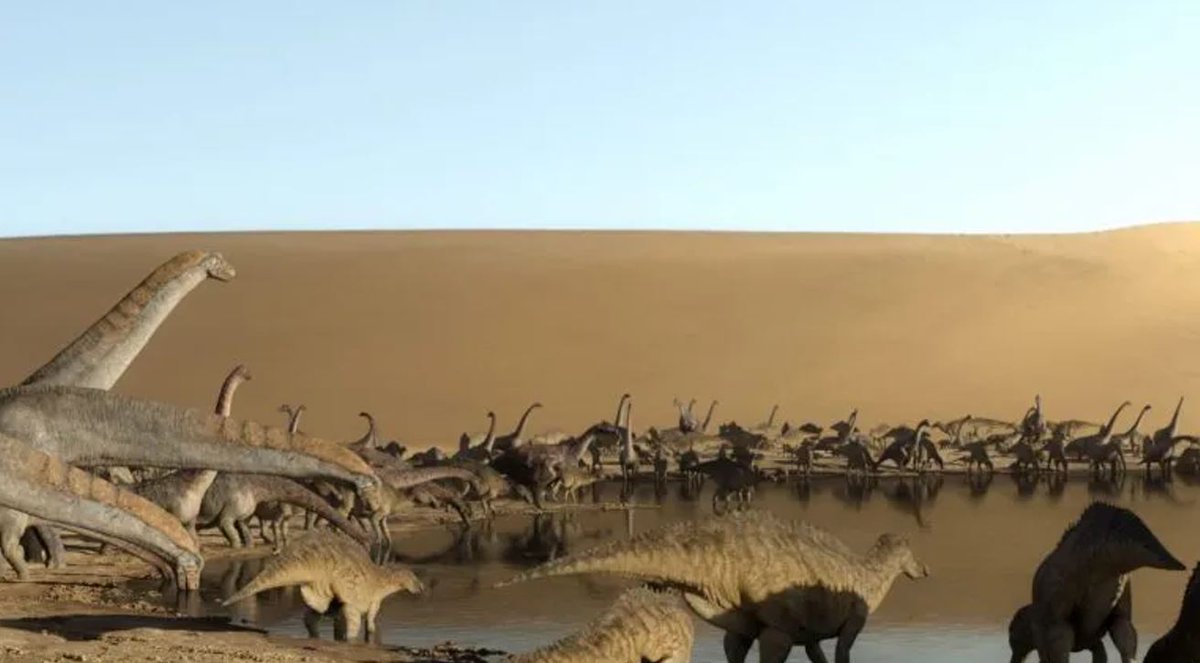

We came up with specific drinking behaviours for our animals. Sauropods are suction-drinkers (that submerge the whole mouth and nose to drink: yes there are animals that do this), ornithischians use vertical tongue motion ('piston drinking') and theropods are 'scoop drinkers'...
Also important in this scene is the idea that animals are acutely aware of the body language expressed by other species. The hadrosaurs are not too worried about the arrival of the tyrannosaur, for example, since it is sending 'I'm not hunting' signals... #PrehistoricPlanet 

On to another much-loved sequence, that showing Moroccan #pterosaur Barbaridactylus. This animal (named 2018) isn't known from much material, but we opted to show it with the incredible antler-like cres known from closely related N American forms [pic Tim Evanson CC BY-SA 2.0] 

These crests (typo above, oops) likely evolved as sexual display structures, and we know from yet other #pterosaurs (pteranodontids) that both body size dimorphism _and_ crest dimorphism was present in these animals (attached cover art by @MarkWitton, a consultant on the series) 

The idea that big, showy males worked to maintain territories and attract females is well supported, and we show male-male combat and male display as part of our main story. Lots of opportunity for posturing, vocalising, male display! But... 

Tens of species today that behave this way have also evolved 'sneaky' males that anatomically mimic females, and gain female access in other ways. This MUST have happened in the past and we wanted to bring attention to this possibility. For more, see ...
The episode draws to a close with another hadrosaur story, this time concerning the small Argentinian kritosaurin Secernosaurus (Huallasaurus, named 2022, of course too late for us to account for)... #PrehistoricPlanet
Note the long limbs, 'roman nose', and our portrayal of the deep neck and unusual hands now thought correct for #hadrosaurs. Note also the fact that we show LOTS OF JUVENILES. #Dinosaurs mostly had large clutches, hence big families, and juvenile mortality was high! 
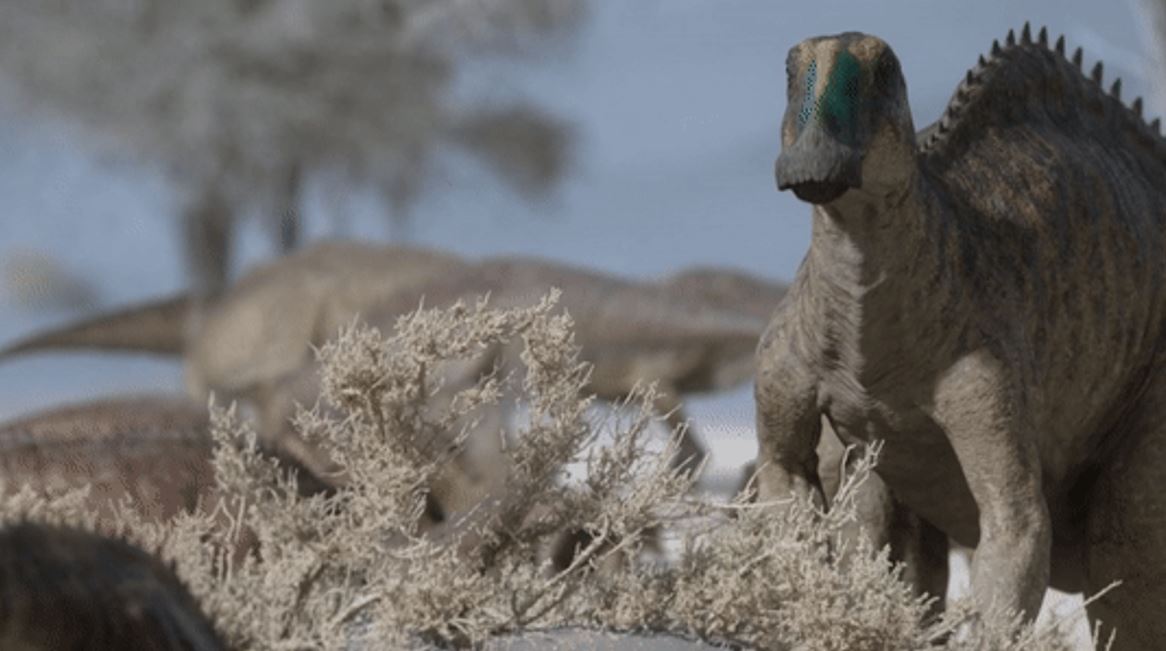
The use of celestial navigation in the Secernosaurus is based on its prevalence in living animals that make long treks, and hadrosaur ear anatomy reveals sensitivity to low-frequency sounds (perhaps even infrasound)...
There's more I could talk about, but I must stop! Once again I must emphasise what a >>gargantuan team effort<< the making of #PrehistoricPlanet was, over 1500 ppl from many backgrounds. Amazing collaboration involving @AppleTVPlus @bbcstudios #BBCStudios @MPCVFX and others!
• • •
Missing some Tweet in this thread? You can try to
force a refresh







